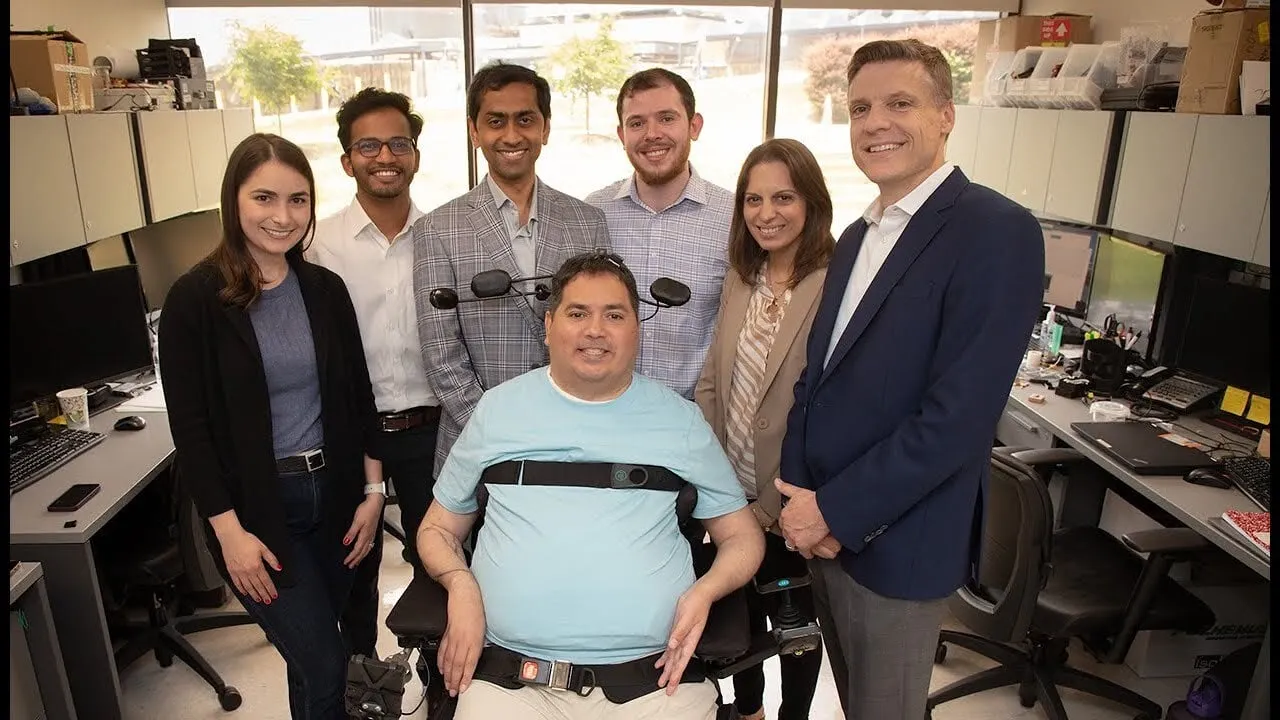In an astounding medical first, researchers have used AI-powered brain implants to restore movement and sensation for a man who was paralyzed from the chest down.
Keith Thomas, 45, became a quadriplegic after a tragic diving accident damaged his C4 and C5 vertebrae in 2020. But thanks to pioneering work by scientists at Northwell Health’s Feinstein Institutes, Thomas can now move his arm simply by thinking about it. Even more remarkably, he can feel the touch of a hand for the first time in three years.
As explained by Northwell Health, this breakthrough was made possible with an innovative “double neural bypass” procedure. First, surgeons implanted microchips in Thomas’ brain in the regions that control movement and touch sensation in the hand. The chip interfaces with AI algorithms that “re-link his brain to his body and spinal cord” interpreting Thomas’ thoughts and translating them into actions.
When Thomas thinks about moving his arm, signals from the brain chip activate a set of electrode patches on his spine and arm muscles to stimulate movement.
Tiny sensors on his fingers, meanwhile, send touch information back to his brain to recreate feeling. It’s a bidirectional mind-machine link that bypasses his spinal injury.
Within just four months of receiving the implants, Thomas has more than doubled his arm strength. And this is just the beginning—researchers believe repeated use of the bypass could promote lasting natural recovery over time. The brain, body and spinal cord may be able to relearn forgotten communication pathways.
“This is a game-changer,” lead researcher Chad Bouton said in an article published by Northwell Health. “Our goal is to one day give people with paralysis the ability to live fuller, independent lives.”
The surgery was arduous, involving a 15-hour brain mapping procedure, and Thomas was awake for parts of it—something that he said was “overwhelming.”
AI And The Future of Science
This work builds upon previous single neural bypasses used in labs to control paralyzed limbs with thoughts. But this two-pronged approach is the first to provide touch feedback and restore physical movement outside the lab. It’s thought-driven therapy made portable.
The potential applications are far-reaching. As researchers optimize the technology, they envision a future where neural implants offer life-changing mobility and independence to many.
Mind-machine interfaces are fast becoming a hot topic, with Elon Musk’s Neuralink attempting similar feats. But this study highlights how AI can amplify the utility of such implants. Artificial intelligence is revolutionizing medicine, from powering diagnostic implants to analyzing reams of clinical data.
We are living in an age of bionic breakthroughs and supercharged minds. The sci-fi dreams of technologically-enhanced humans are inching closer to reality as AI and neurotech converge. From fighting cancer, to enhancing longevity and now restoring limb function, the possibilities seem endless.
This has been a great year for those following the intersection between medicine and technology. Recently, scientists have been able to use AI in order to achieve major discoveries like Ankh—a LLM that understands the language of proteins and helps create new, better proteins—an AI that can discover drugs to kill 'Zombie Cells' and fight age-related diseases, and even an AI that predicts the outcomes of cancer treatment research.
The rich are already investing in these fringe technologies to increase their health and fight longevity, so what’s next on the horizon? A mind-reading AI? Oh wait, that also exists.
With great innovation comes great responsibility. As new invasive procedures start to emerge, scientists must consider the profound ethical implications of such enhancements. One thing is clear though: technology is redefining what it means to be human.

